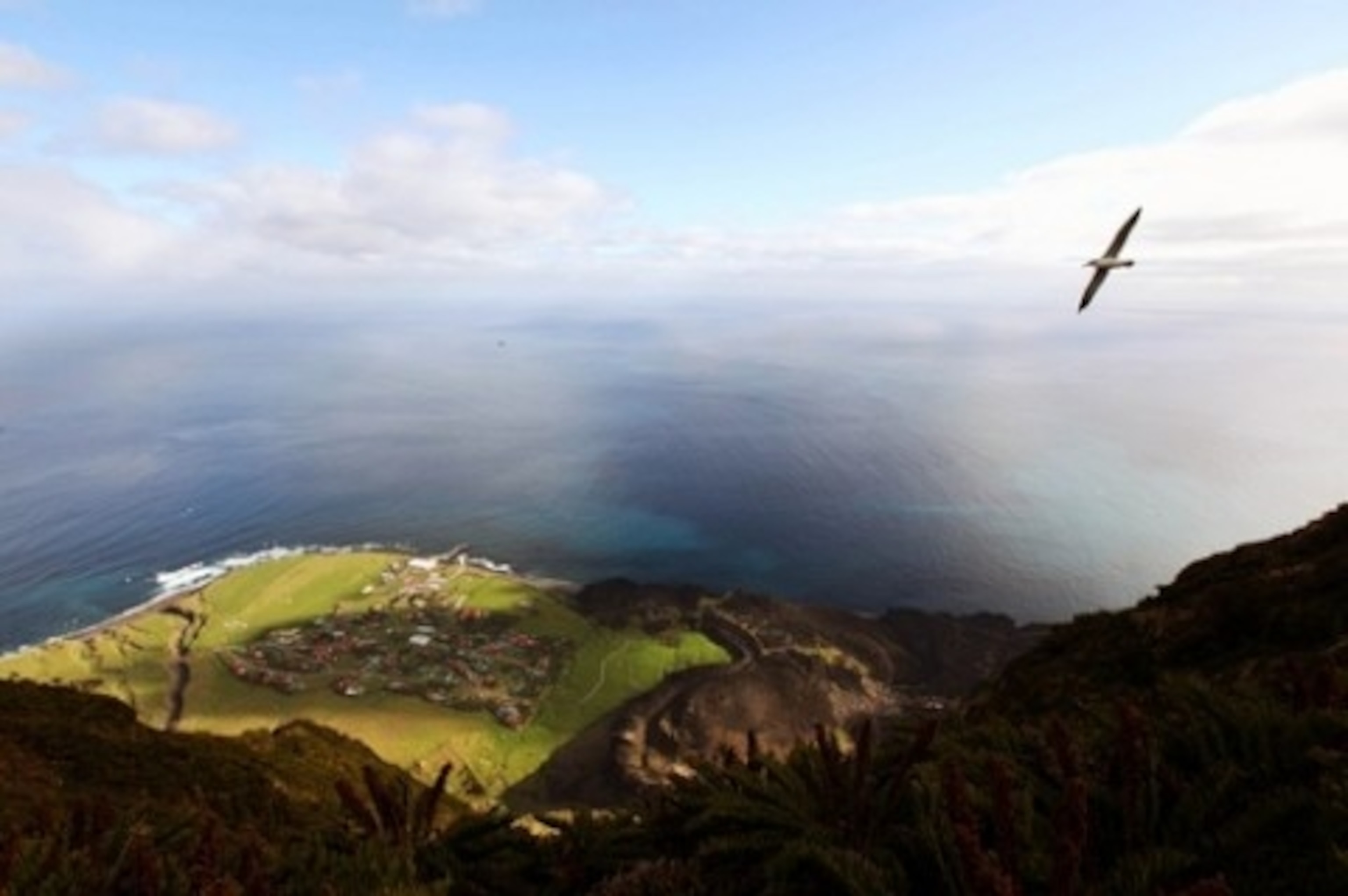
Postcard from Tristan da Cunha
Traveler writer Andy Isaacson is just back from Tristan da Cunha on assignment for the magazine. Below, he offers a peek into what it’s like to visit the most remote island in the world.
Reaching the world’s most remote inhabited island is, and probably has always been, an awesome moment. From Cape Town, I sailed west across the Atlantic for six days on a South African polar research vessel, covering nearly 1,700 miles, or the equivalent trip from NYC to Denver. Every day the horizon was flat, unbroken. On the seventh day, at 6 a.m., I walked onto the deck and looked up to an enormous volcano, capped by snow, towering over the sea. This is how I arrived at the island of Tristan da Cunha, and its tiny settlement, the romantically named, “Edinburgh of the Seven Seas.”
How did I get here? One afternoon last spring, I was curious about how it felt to live on the fringe of the planet, and a bit of online searching turned up Tristan, located 1,450 from the nearest inhabited settlement of St. Helena (the distance from Chicago to Miami). I’m spending three weeks here on assignment for the magazine. In recent years, many changes have come to this formerly isolated outpost. Now, in ways, this UK territory, inhabited by 270 descendants of British soldiers, Dutch sailors, American whalers, and (two) Italian castaways, resembles a Scottish fishing village: one general store and pub (The Albatross), and the community meeting place, Prince Philip Hall, which holds Saturday night dances and the mail call when ships arrive every 4-6 weeks. The landscape is a mix of potato plots and sheep fences, and tiny single-story houses with corrugated roofs that have the Internet and British TV piped into their living rooms.
Working here has had its challenges. Over the years, journalists have visited Tristan, only to write or air inaccurate, superficial or somehow offensive things, resulting in a justifiable weariness. (Every visitor, in fact, must be appeal to the Island Council to land here – for real, you can be voted on or off this island.) I’ve warmed up to the locals by helping plant potatoes and dancing a decent waltz, but I haven’t managed to warm the weather any. It’s been mostly gusty and overcast; there have only been three sunny days in three weeks, which has confined my movement. Everything is determined by the weather, Tristanians will say, and that also depends on which way the wind blows. Today it’s an easterly, and as my host here said: “East is the Beast.”
Andy Isaacson has written for the New York Times, Afar magazine, and National Geographic Traveler. Check out his most recent article about an ocean engineer, a famed aviator, and their secret project to reach the bottom of the planet in National Geographic Adventure magazine. Learn more about Andy on his website or by following him on Twitter.
- National Geographic Expeditions
